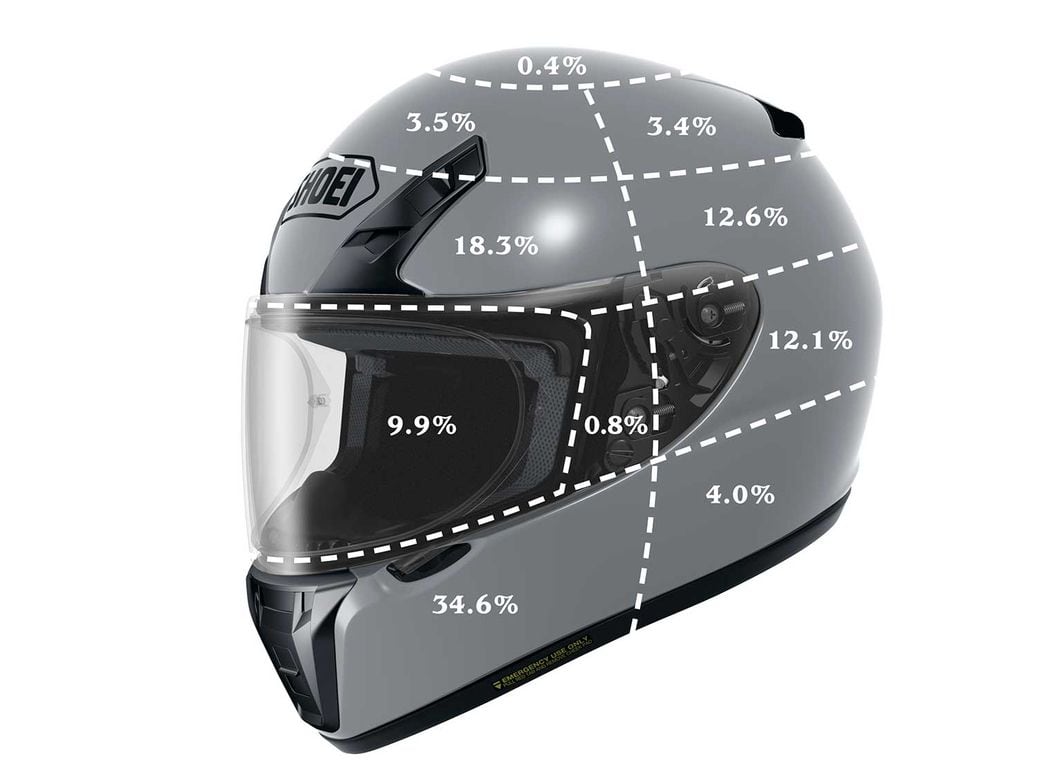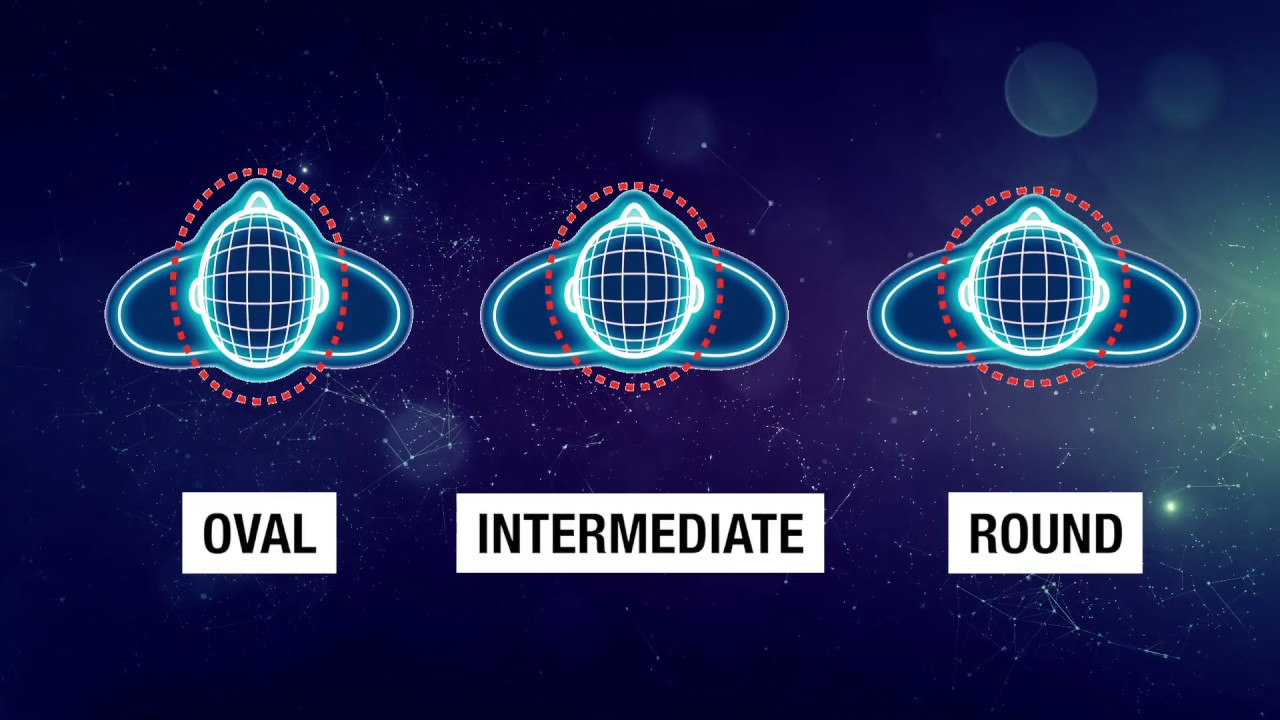There are a few things to consider when determining head shape for a motorcycle helmet. First, measure the circumference of your head just above the eyebrows with a tape measure. Second, consider the shape of your face.
Do you have a round face? Oval? Heart?
Long and narrow? Knowing your head shape will help you narrow down helmet choices. Third, try on helmets!
The only way to know if a helmet is comfortable and fits properly is to put it on and wear it around for awhile. Be sure to adjust the straps so that the helmet is snug but not too tight.
- Decide on the style of motorcycle helmet you would like to wear
- There are three basic types of motorcycle helmets – full face, open face, and half helmet
- Each has its own set of pros and cons that you should consider before making a decision
- Find a friend or family member who can help you with this process
- It will be much easier to determine your head shape if someone else is there to assist you
- Measure the circumference of your head using a tape measure
- Be sure to measure at the widest point, which is typically just above the eyebrows
- Compare your measurements to a size chart for motorcycle helmets
- This will give you an idea of what size helmet you need to purchase
- 5) Determine your head shape by looking in a mirror and observing the overall contours of your skull
- For example, some people have rounder heads while others have more oval-shaped heads
- Once you know your general head shape, it will be easier to find a helmet that fits well
- 6) Try on several different styles and sizes of motorcycle helmets until you find one that feels comfortable and secure
- Make sure the helmet sits level on your head and does not rock back and forth when you move your head side to side
- 7) Double check that the straps on the helmet are tightened properly before heading out for a ride!

Credit: www.motorcyclistonline.com
What Size Helmet Do I Need for a 22 Inch Motorcycle Head?
When it comes to motorcycle helmets, size definitely matters. A helmet that’s too small is not only uncomfortable, but it can also be dangerous. If a helmet is too big, it can easily come off in the event of an accident.
That’s why it’s so important to get the right fit when choosing a motorcycle helmet.
For riders with a head circumference of 22 inches, we recommend looking for a helmet that’s size Large or X-Large. While you might be tempted to go with a smaller size in order to save money or because you think it looks cooler, trust us when we say that safety should always come first.
It’s better to spend a little extra on a properly fitting helmet than risking your life with an ill-fitting one.
Once you’ve found a few helmets in your size range, the next step is to try them on and see how they feel. Pay attention to areas like the brow pad and cheek pads – they should fit snugly without putting any pressure points on your head.
And make sure that you can see out of the visor without any distortion – you’ll want clear vision while riding.
Choosing the right motorcycle helmet is crucial for both comfort and safety, so take your time and find one that fits well and feels good before hitting the road.
Should a Motorcycle Helmet Squeeze Your Cheeks?
No, a motorcycle helmet should not squeeze your cheeks. In fact, it should fit snugly around your entire head without being too tight. If it is squeezing your cheeks, it is likely too small and you need to find a different size.
How Do I Know If My Head is Oval Or Round?
If you’re unsure of your head shape, there are a few ways to determine whether you have an oval or round face. One way is to look at yourself in the mirror and observe the overall shape of your face. Is it more elongated, or is it more circular?
If it’s more elongated, then you likely have an oval face. If it’s more circular, then you likely have a round face.
Another way to tell is by measuring the circumference of your head.
To do this, wrap a measuring tape around your forehead just above your eyebrows and ears. Then, measure from the bridge of your nose to the back of your head where it meets your neck. Compare these two measurements – if they’re about equal, then you have a round face; if the first measurement is greater than the second, then you have an oval face.
Finally, consider the width of your jawline and cheekbones. Do they appear relatively wide? If so, then you probably have a round face.
Conversely, if they appear narrower than average, then you likely have an oval face.
Oval faces tend to be considered as being more ‘pleasing’ or ‘attractive’ than round faces – so if that’s something that’s important to you, then keep that in mind! Ultimately though, whichever head shape you have is completely unique to you and there’s no right or wrong answer – so embrace whatever shape yours may be!
How Do You Know If a Helmet Fits?
A good helmet fit is snug but not too tight. It should sit level on your head (not tilted back) and low on your forehead—about two fingers’ width above your eyebrow. The side and back of the helmet should fit snugly but not put pressure on your temples or the sides of your head.
And, you shouldn’t be able to move the helmet more than an inch in any direction when it’s properly buckled on.
Properly Fitting A Motorcycle Helmet
Best Motorcycle Helmet for Oval Shaped Head
Oval shaped heads are the most common head shape and as such, there are more motorcycle helmet options that cater to this head shape than any other. When shopping for a motorcycle helmet, it is important to keep in mind not only your head shape, but also the size and proportions of your head.
There are a few different types of motorcycle helmets that oval shaped heads can benefit from.
Full face helmets offer the most protection for your head and face in the event of an accident. They enclose your entire head and often have a visor to protect your eyes from debris or bugs while you’re riding. Modular helmets offer similar protection to full face helmets, but with the added benefit of being able to lift up the front portion of the helmet while stopped, making them more comfortable for long rides.
Open face or ¾ helmets offer less protection than full face or modular helmets, but may be more comfortable in hot weather conditions.
When choosing a motorcycle helmet, it is important to try on several different styles before settling on one. Different manufacturers have different sizing charts, so what fits well from one brand may be too small or too large from another.
Be sure to follow the sizing chart for each individual brand when choosing a motorcycle helmet.
Conclusion
The motorcycle helmet is an essential piece of safety gear, and it’s important to choose one that fits your head properly. There are three main types of motorcycle helmets: full face, open face, and half helmet. Each type has its own benefits and drawbacks, so it’s important to choose the right one for you.
Full face helmets offer the most protection, covering your entire head andface. They’re ideal for racing or long-distance riding, but they can be hotand uncomfortable in stop-and-go traffic. Open face helmets don’t cover yourface, but they do provide more ventilation than full face helmets.
They’re agood choice for shorter rides or if you wear glasses or a beard that makesa full face helmet difficult to put on. Half helmets only cover the topof your head, leaving your ears and face exposed. They’re the lightestand coolest option, but they offer the least protection in a crash.
To find the right size helmet for you, measure the circumference of yourhead just above your eyebrows with a tape measure. Compare that numberto the size chart included with the helmet to find the best fit. Onceyou’ve found a helmet that fits well, try it on and make sure you canseal all of the straps correctly.
The straps should be snug but not too tight;you should be able to fit two fingers between strap and skin comfortably .
